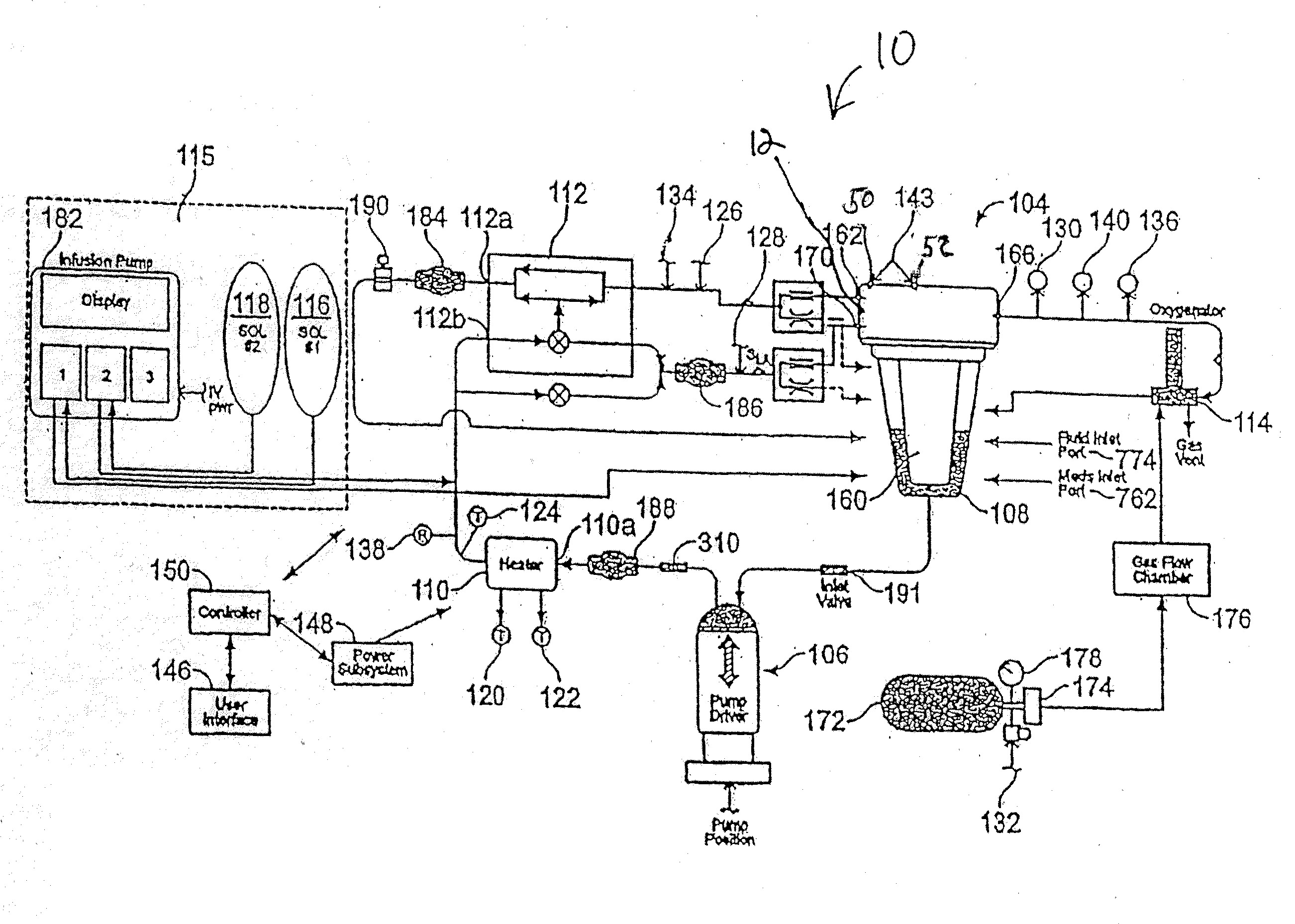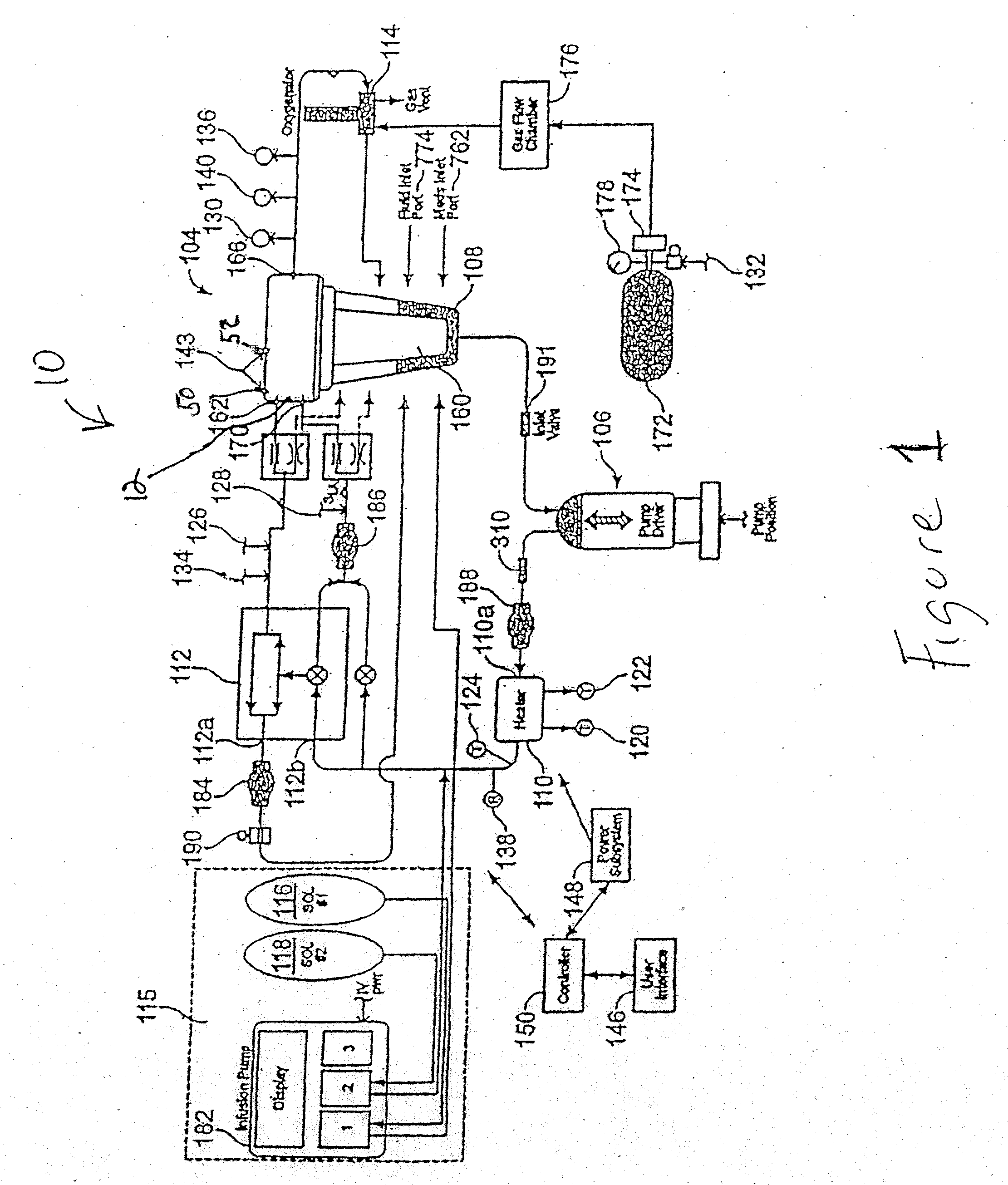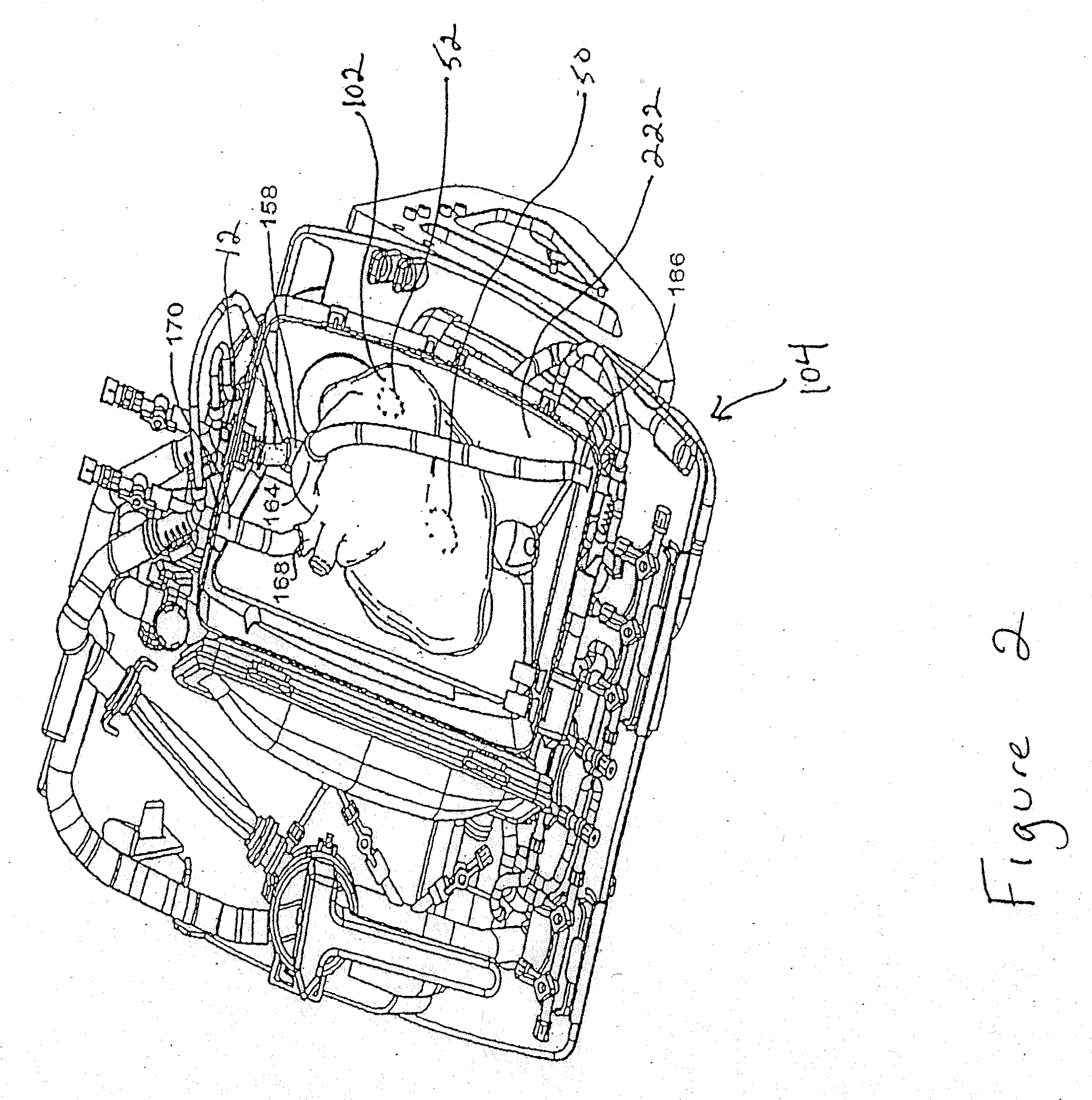Systems for monitoring and applying electrical currents in an organ perfusion system
an organ perfusion system and electrical current technology, applied in the field of organ perfusion system monitoring and applying electrical currents, can solve the problems of coronary vasomotor dysfunction, unsatisfactory protection of the heart from myocardial damage, and particularly undesirable injuries, and achieve better electrical connection, stable position, and stable ecg signals.
- Summary
- Abstract
- Description
- Claims
- Application Information
AI Technical Summary
Benefits of technology
Problems solved by technology
Method used
Image
Examples
Embodiment Construction
[0008]Electrode systems have been developed for use in perfusion systems to measure the electrical activity of an explanted heart and to provide defibrillation energy as necessary. The perfusion systems maintain the heart in a beating state at, or near, normal physiologic conditions; circulating oxygenated, nutrient enriched perfusion fluid to the heart at or near physiologic temperature, pressure and flow rate. These systems include a pair of electrodes that are placed epicardially on the right atrium and left ventricle of the explanted heart, as well as an electrode placed in the aortic blood path.
[0009]An advantage of this configuration allows an electrode to be held against the right atrium of the explanted heart under the heart's own weight, which reduces the likelihood that the electrode will shift during transport of the heart due to vibrations or the beating of the heart itself. As well, placing the electrode epicardially allows the electrode to be manipulated to ensure bett...
PUM
 Login to View More
Login to View More Abstract
Description
Claims
Application Information
 Login to View More
Login to View More - R&D
- Intellectual Property
- Life Sciences
- Materials
- Tech Scout
- Unparalleled Data Quality
- Higher Quality Content
- 60% Fewer Hallucinations
Browse by: Latest US Patents, China's latest patents, Technical Efficacy Thesaurus, Application Domain, Technology Topic, Popular Technical Reports.
© 2025 PatSnap. All rights reserved.Legal|Privacy policy|Modern Slavery Act Transparency Statement|Sitemap|About US| Contact US: help@patsnap.com



